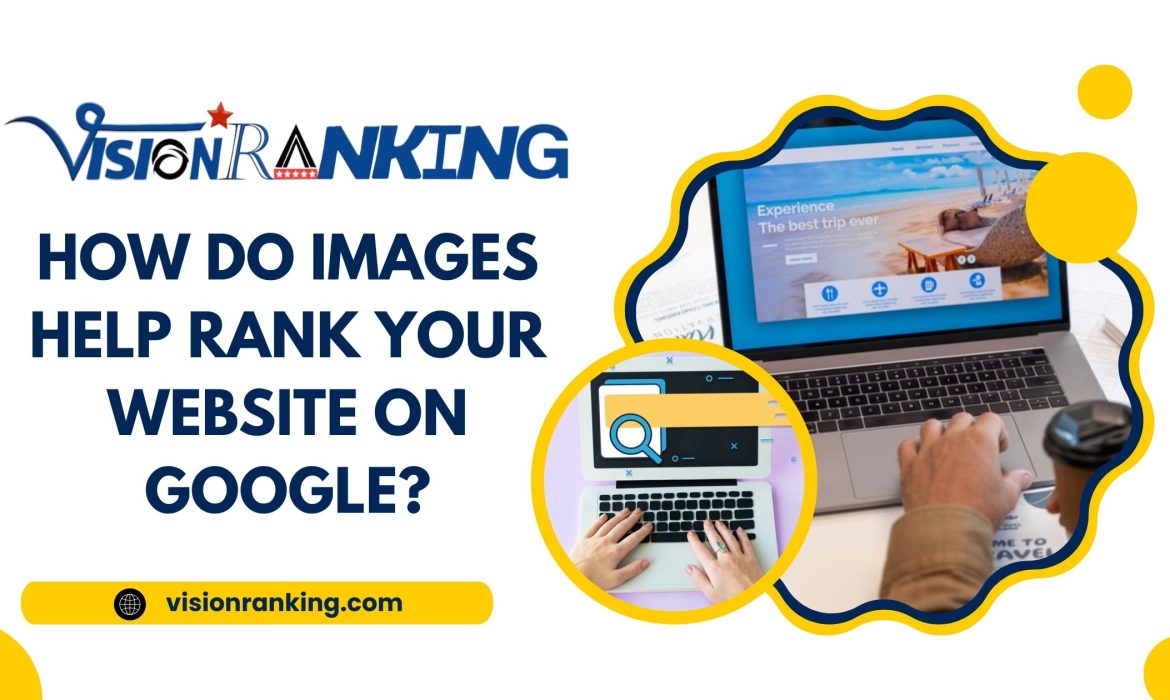
In the world of SEO, content isn’t just about words—images play a vital role too. When used correctly, they can improve your site’s ranking on Google and enhance the overall user experience. At Vision Ranking, we understand how crucial images are in driving traffic and improving SEO performance.
Let’s explore how images can contribute to your website’s Google ranking.
1. Enhanced User Experience
Google’s algorithm is designed to prioritize websites that provide the best experience for users. High-quality, relevant images break up blocks of text, making content more engaging and easier to understand. Users are more likely to stay on a page that is visually appealing, which reduces bounce rates. A low bounce rate signals to Google that visitors are finding value in your content, which can lead to higher rankings.
2. Improved Page Load Speed
Speed is a direct ranking factor for Google, and images can either help or hinder your page’s load time. Large, unoptimized images slow down your website, which negatively impacts both user experience and rankings. At Vision Ranking, we emphasize using the right image formats and compression techniques to ensure that images load quickly without sacrificing quality. Tools like lazy loading also help by only loading images when they come into the user’s viewport, speeding up the initial page load time.
3. Alt Text and Accessibility
Google’s crawlers can’t “see” images, but they can read the image’s alt text. Alt text is a brief description of the image’s content, and when optimized with relevant keywords, it can help Google understand the context of your images. This boosts the overall SEO performance of your page. Furthermore, alt text improves the accessibility of your site, allowing visually impaired users to understand what the image represents through screen readers. This creates a better user experience for all and aligns with Google’s goal of promoting inclusive web design.
4. Image Search Results
Optimizing images for Google not only boosts page rankings but also increases the chances of your images appearing in Google Image Search. Many users search directly for images, especially in industries like e-commerce, travel, or real estate. If your optimized images appear in search results, they can drive additional traffic to your site, leading to higher engagement and better rankings.
5. Mobile Optimization
Mobile-first indexing is now standard for Google, meaning that websites are primarily ranked based on their mobile versions. Properly sized and optimized images ensure that mobile users have a seamless experience. Google rewards websites that perform well across all devices, so image optimization for mobile is crucial.
6. Structured Data for Images
Adding structured data to your images is another way to boost their visibility. Structured data helps Google understand the context of your images, which can make them eligible for rich results. For example, product images with structured data may appear in rich snippets, improving your site’s visibility and click-through rate. At Vision Ranking, we specialize in adding schema markup to ensure that your images and other content are fully optimized for search.
Conclusion
Images are more than just visual aids—they are a powerful SEO tool when used strategically. From improving user experience to optimizing for mobile, images play a crucial role in helping your site rank higher on Google. At Vision Ranking, we believe in a holistic approach to SEO that incorporates both content and images, helping you achieve better results on search engines.
Start optimizing your images today, and watch your rankings soar!





